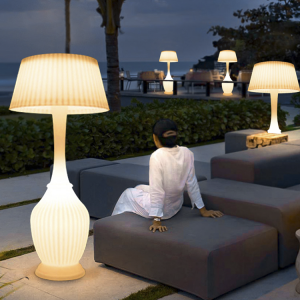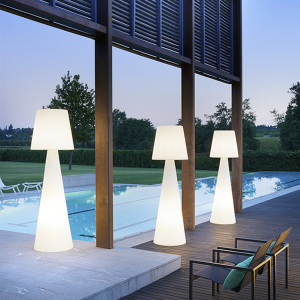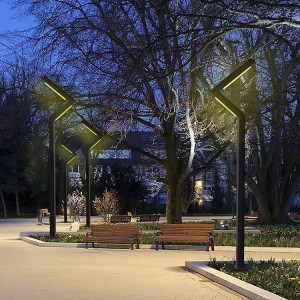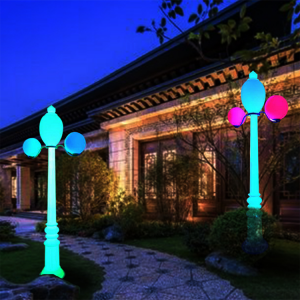I. Introduction
Street lighting is an important part of urban infrastructure, providing safety for pedestrians and motorists. As technological advances continue to shape our cities, traditional lampposts have evolved, giving rise to solar streetlights. These innovative solar alternatives are becoming increasingly popular due to their greater efficiency and effectiveness.
Solar street lights utilize solar energy to generate electricity through photovoltaic panels, whereas traditional lampposts are connected to the grid. This fundamental difference in power sources has many implications, which we will explore in this paper.
II. Efficiency Dimensions
Efficiency is a key consideration when evaluating different types of streetlights.
① Solar streetlights
have a clear advantage in terms of energy efficiency. Because they run entirely on solar energy, they do not consume grid power, significantly reducing energy costs. Photovoltaic panels convert sunlight into electricity, which is stored in batteries for nighttime use. This autonomous system eliminates the need for wiring and trench digging, saving time and money during installation.
Additionally, solar streetlights feature advanced energy management systems that optimize their energy use. These systems often include smart sensors that adjust the brightness of the lights based on surrounding conditions. For example, when no activity is detected, the lights dim, thereby saving energy and maximizing battery life. This feature not only reduces power consumption, but also improves the overall lifespan and reliability of solar street lights.
②Traditional lamp posts
rely primarily on grid power and are less energy efficient. They are subject to power fluctuations and interruptions, which can lead to increased maintenance and repair costs. In addition, lampposts require constant monitoring and manual adjustment to ensure optimal lighting levels. This manual operation can lead to inefficiencies as the lights may stay on during the day or go out at night.
III. Level of Effectiveness
The effectiveness of street lighting is usually measured by its illumination level, uniformity and color rendering index (CRI).
① Solar street lights
LED technology is often used, which provides good illumination levels while consuming less energy. LEDs are also available in a variety of color temperatures and can be customized to meet specific requirements. the use of LEDs in solar streetlights ensures consistent, high-quality illumination, which improves safety and visibility in urban areas.
② Lamp posts
Can provide effective lighting, but may not be sufficient in some areas. Traditional lighting technologies, such as high-pressure sodium lamps, have limitations in terms of color rendering and uniformity. These lamps tend to emit a yellowish light that distorts color and reduces visibility at night. In addition, older lampposts may require frequent bulb replacements, which can be both expensive and time-consuming.
Resources | Quick Screen Your Solar Street Lights Needs
IV. From the maintenance level
① Solar Street Lights
require minimal maintenance due to their autonomous operation. Problems associated with incorrect wiring are eliminated because there is no external power connection. Photovoltaic panels and batteries may require occasional cleaning and inspection, but these tasks are relatively simple and less labor intensive.
②Lamp posts
Regular maintenance is usually required to ensure proper operation. Bulbs and other components may need to be replaced on a regular basis, which can be time-consuming and increase overall maintenance costs. In addition, the dependence of lamp posts on the grid means that any disruption or interruption to the grid infrastructure will affect their operation.
V. Environmental Impact
Solar street lights have a significantly lower carbon footprint compared to lamp posts. By utilizing solar energy, they reduce their dependence on the fossil fuel grid. Reducing greenhouse gas emissions helps combat climate change and promote sustainable development. Additionally, solar street lights do not produce light pollution as their smart sensors ensure that they are only activated when needed.
VI.Summary
In short, solar street lights are a more efficient and effective alternative to traditional light poles. Their autonomy, energy efficiency and advanced technology make them the best choice for eco-friendly urban lighting. If you want to buy commercial solar powered street lights, you can contact Huajun Lighting Factory to give you the most reasonable price and service.
Resources | Quick Screen Your Solar Street Lights Needs
Related Reading
Illuminate your beautiful outdoor space with our premium quality garden lights!
Post time: Oct-19-2023










